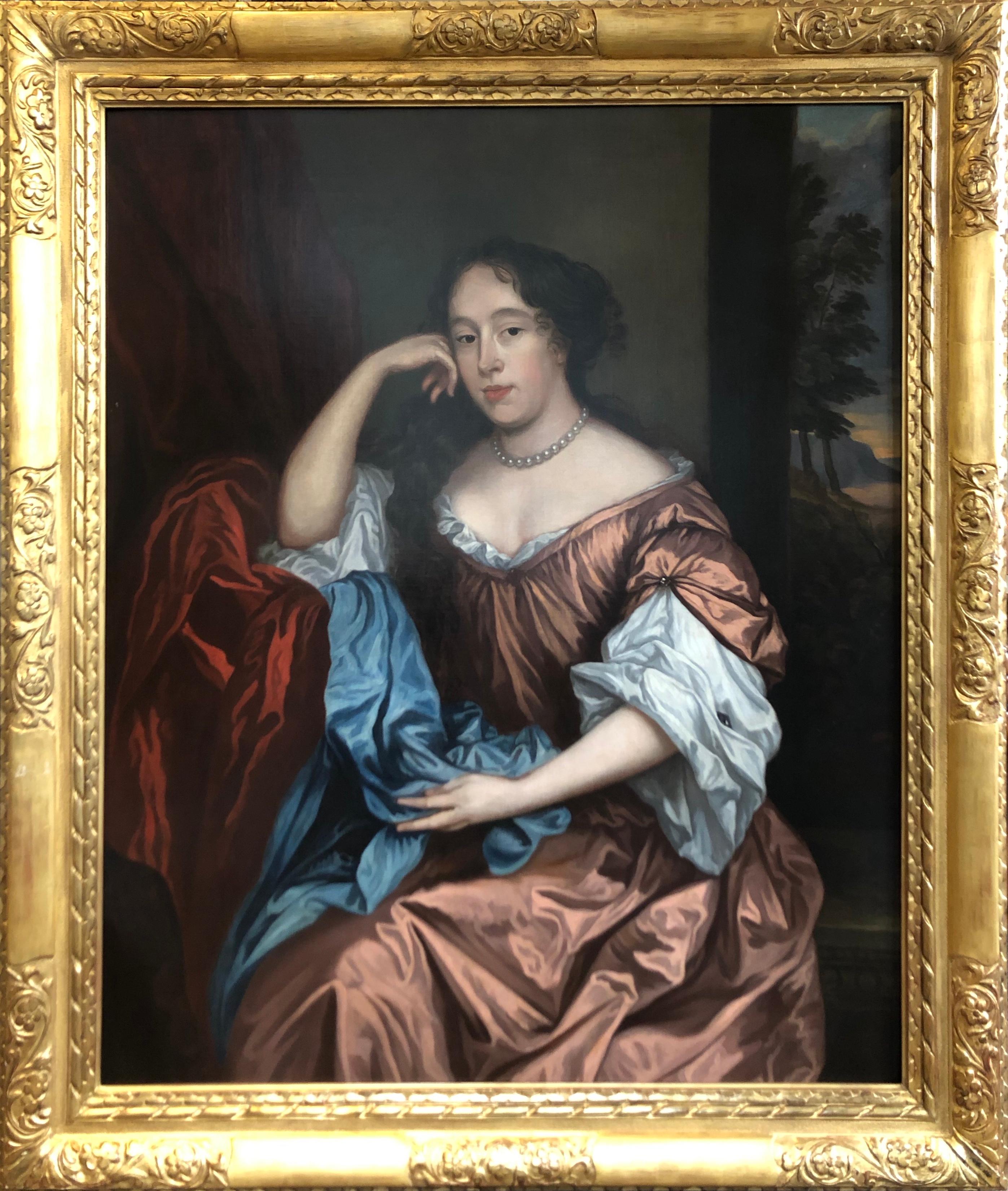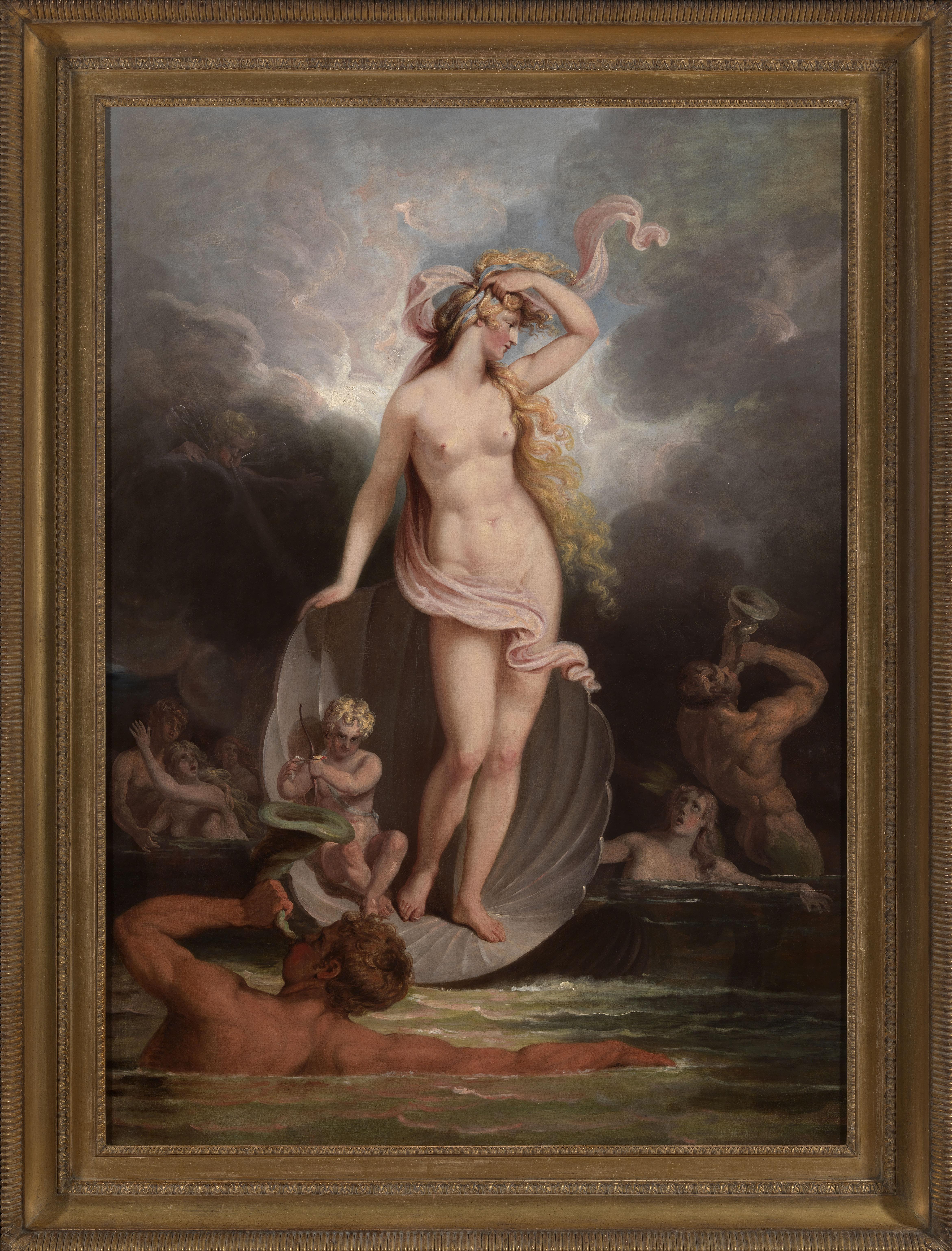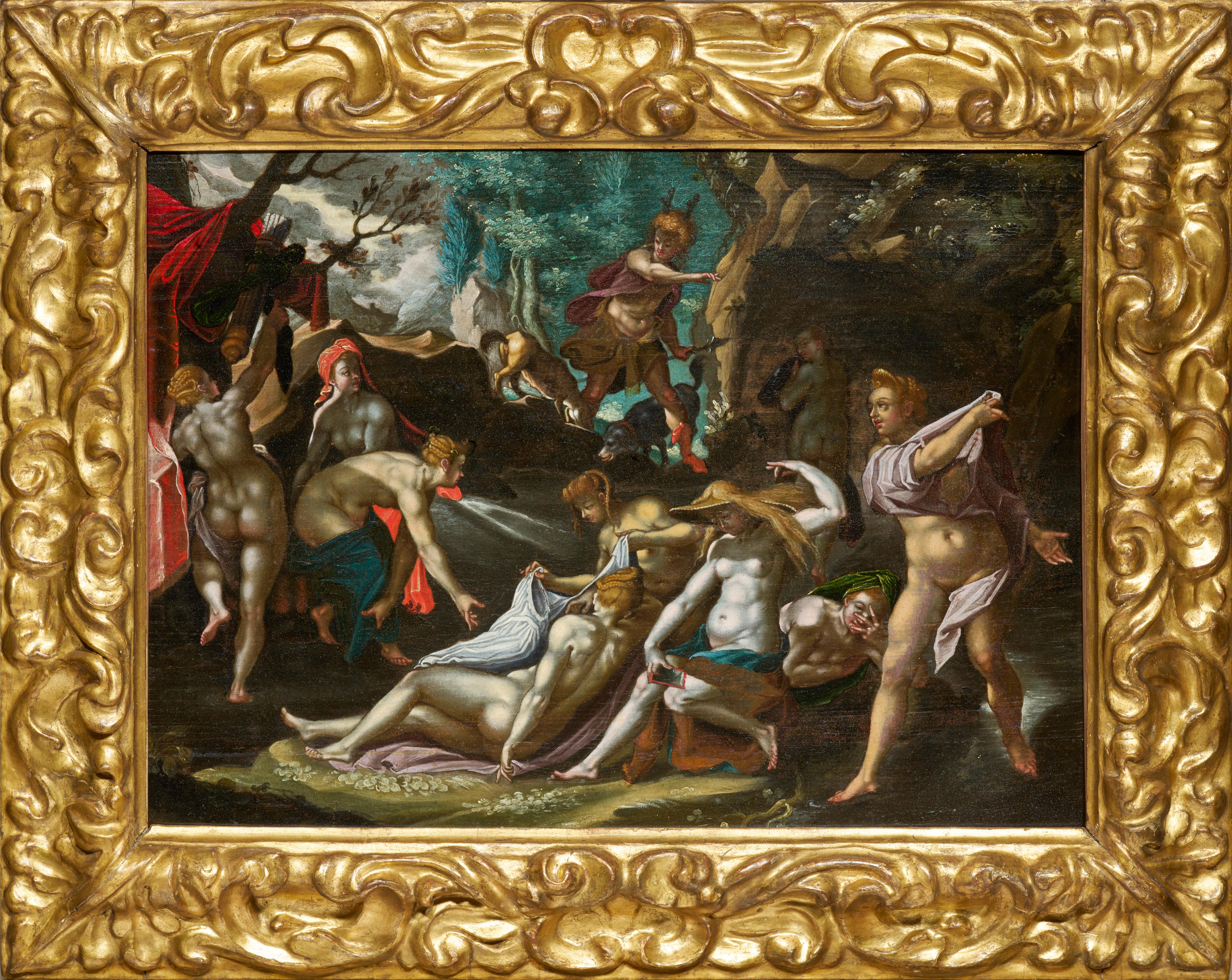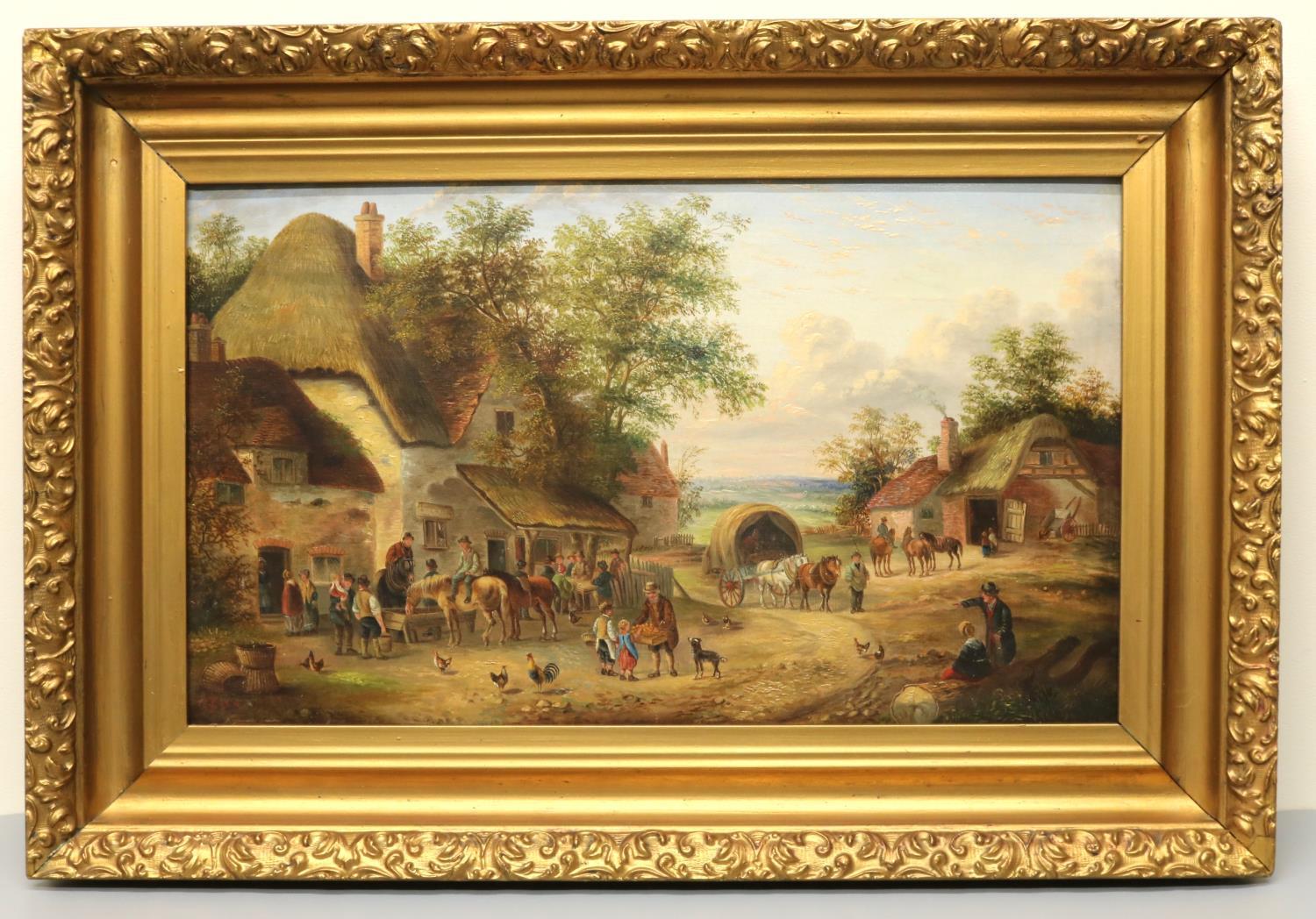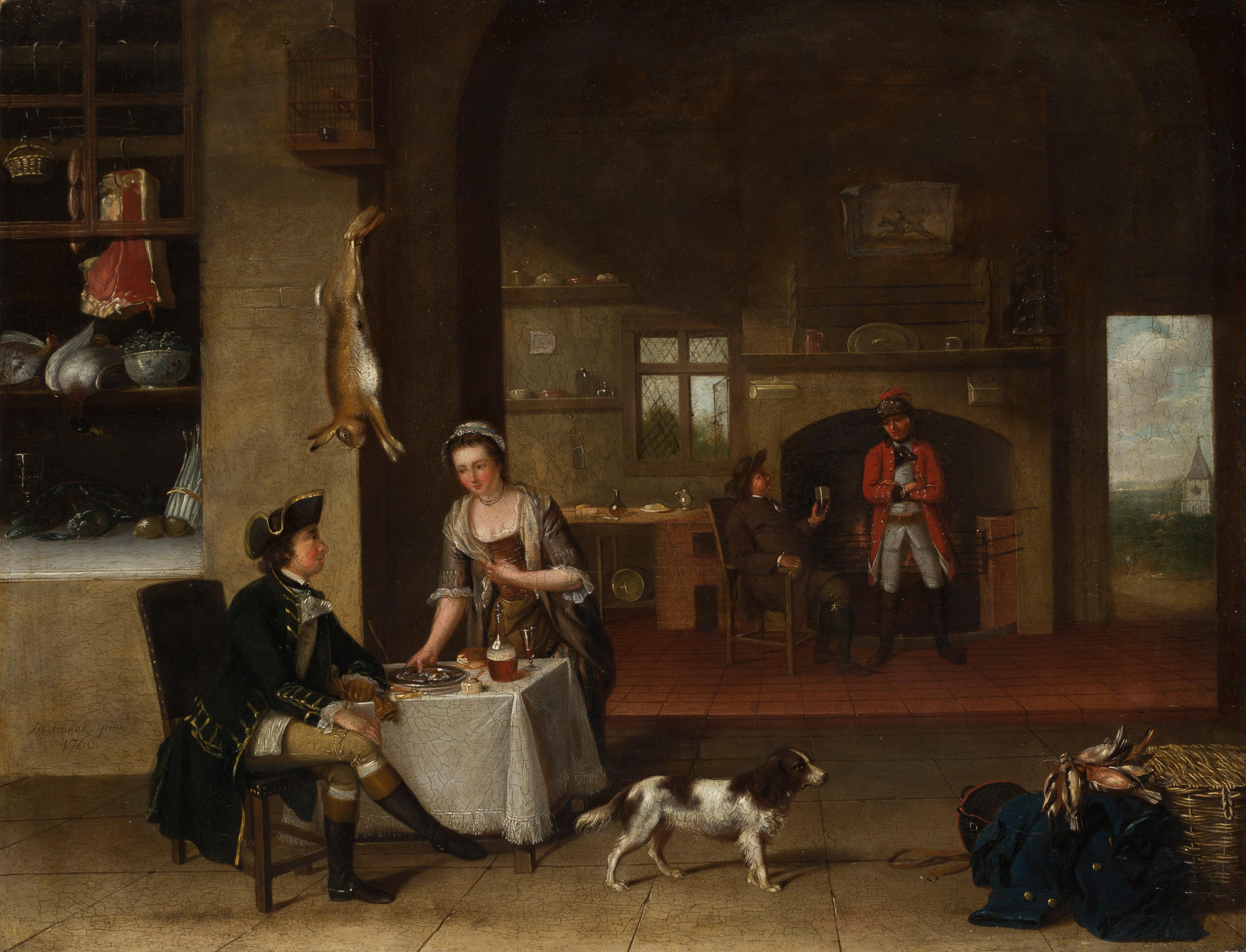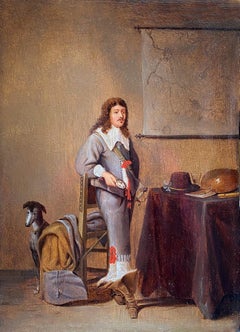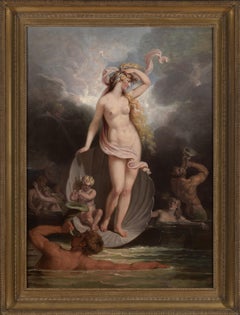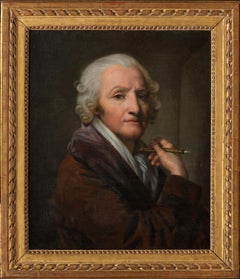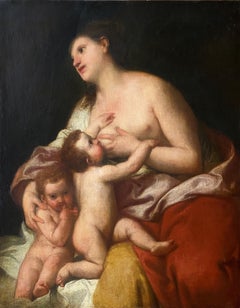
Allegory of Charity, 17th Century Oil Old Master
Want more images or videos?
Request additional images or videos from the seller
1 of 4
Allegory of Charity, 17th Century Oil Old Master
About the Item
- Dimensions:Height: 33 in (83.82 cm)Width: 42 in (106.68 cm)
- Medium:
- Movement & Style:
- Circle Of:Raffaello Vanni (1587 - 1657, Italian)
- Period:
- Framing:Framing Options Available
- Condition:
- Gallery Location:London, GB
- Reference Number:1stDibs: LU5248042512
About the Seller
5.0
Vetted Seller
These experienced sellers undergo a comprehensive evaluation by our team of in-house experts.
Established in 2007
1stDibs seller since 2014
63 sales on 1stDibs
Typical response time: 3 hours
More From This SellerView All
- Soldier in an Interior, Early 17th Century Dutch OilLocated in London, GBPieter Symonsz Potter Dutch 1600 - 1652 Soldier in an Interior Oil on oak panel, red seal to reverse Image size: 15 x 10 3/4 inches Dutch Ebonised frame Bathed in a well lit roo...Category
Early 17th Century Old Masters Portrait Paintings
MaterialsOil, Board
- Peasants Playing Bowls Outside an Inn, 17th Century Oil on Oak Old MasterLocated in London, GBStudio of David Teniers the Younger 1610 - 1690 Peasants Playing Bowls Outside an Inn Oil on oak cradled panel, signed Image size: 16 ½ x 22 ½ inches Gilt s...Category
17th Century Old Masters Figurative Paintings
MaterialsOil
- The Lamentation of Christ, 16th Century Oil Old MasterLocated in London, GBCircle of Ridolfo Ghirlandaio 1483 - 1561 Oil on panel Image size: 20 ½ x 16 ½ inches (52 x 42 cm) Handmade contemporary style gilt frame The lamentation of Christ was one of the most popular scenes depicted in European art from the 11th to the 18th century. Depicting the lamentation or pieta from the Italian word for ‘Pity’ of Christ with Jesus’s mother Mary cradling his body. Christ is depicted nude, wearing only a blueish loincloth around his waist, a horizontal scar marking his rib cage. His head and torso are held upright, and his eyes are closed, his right arm lays to his side as does his left. Standing behind him, is the Virgin Mary, outfitted in her traditional dress of a robe with a white veil. She stands behind Christ and bends slightly, looking looking away from Christ to something that has caught her attention, her right hand holding his shoulder. Her left-hand carefully holds his arm. This work is quite unusual with Mary . This stunning work jumps out with its dark background and strong flesh colours. Ridolfo Ghirlandaio was the son of the eminent painter Domenico Ghirlandaio. Following his father’s death in 1494, when he was just eleven years old, Ridolfo is thought to have continued his training with his uncle Davide, who had taken over the Ghirlandaio workshop. Vasari noted that Ridolfo also studied with Fra Bartolommeo...Category
16th Century Old Masters Figurative Paintings
MaterialsOil
- The Solemn Morris DancerBy Yosl BergnerLocated in London, GBOil on board Image size: 5 3/4 x 7 inches (14.5 x 17.75 cm) As can be seen in this painting, Surrealism served as a source of inspiration for Bergner, though he did not consider himself a surrealist but a lover of stories, and indeed narrative elements appear frequently in his work. He uses the “displacement” element, as the Surrealists did, and that is detaching the figures, objects or landscapes from the logical context and into a poetical-magical climate. Nissim Aloni noted in 1983 He paints as though to install stabilizers against the turbulence of the dream, and perhaps these stabilizers serve him in time as a touchstone'. The Artist Yosl Bergner was born in Vienna, Austria, in 1920 and grew up in Warsaw, Poland. With rampant anti-Semitism in Europe, the Freeland League for Jewish Territorial Colonization was formed in the United States in July 1935, to search for a potential Jewish homeland. Soon afterwards a pastoral firm in Australia offered the League about 16,500 square kilometres (6,400 sq mi) in the Kimberleys, stretching from the north of Western Australia into the Northern Territory. As history showed, the plans went nowhere. But for a time, the Australian idea was at least worth considering. Bergner's father, Melech Ravitch, became involved in a serious investigation of the Kimberley Plan. In this way the Bergner family moved to Australia. Yosl emigrated to Australia in 1937 and studied in the National Gallery School in Melbourne. During World War II he served for four and a half years in the Australian Army, and later continued his studies at the Art School. In Melbourne from 1937–48, Bergner befriended many of the local artists who now epitomize modern Australian art: Sidney Nolan, Albert Tucker...Category
Mid-20th Century Surrealist Figurative Paintings
MaterialsOil, Board
- The Dance, 20th Century Oil PaintingBy Francis PlummerLocated in London, GBOil on board Image size: 30 ¼ x 23 ½ inches Gilt frame Plummer specialised in the medium of egg tempera, a technique little used since the frescos of the Renaissance, he often work...Category
Mid-20th Century English School Figurative Paintings
MaterialsOil, Board
- Leda and the Swan, 20th Century Art Deco Signed OilBy Arthur MoodyLocated in London, GBArthur Moody Flourished 1920 - 1940 Leda and the Swan Oil on board Signed lower left and dated 1925 Image size: 15 × 8 inches (33.5 x 54 cm) Gilt frameCategory
20th Century Art Deco Figurative Paintings
MaterialsOil, Board
You May Also Like
- Portrait of a Lady, After Sir Peter Lely (1610-1680) Oil PaintingBy After Sir Peter LelyLocated in Uppingham, GBOil Painting After Sir Peter Lely (1610-1680) Portrait of a Lady Housed in a Lely gold Leaf Frame. Peter Lely: In 1647 he became a member of the Pain...Category
17th Century Old Masters Portrait Paintings
MaterialsOil
- 18th century allegorical painting of The Triumph of BeautyLocated in London, GBExhibited: London, Royal Academy, 1800, no. 93 What was happening in British history painting in around 1800? In recent discussions of the emergence of a British School of history painting following the foundation of the Royal Academy in 1768, this is a question which is rarely posed and one which is not easily answered. Examination of surviving Royal Academy exhibition catalogues reveals a profusion of artists’ names and titles, few of which remain immediately recognizable, whilst endeavours to explain the impact of exhibition culture on painting - such as the 2001 Courtauld show Art on the Line - have tended to focus on the first and second generation of Royal Academician, rather than young or aspiring artists in the early nineteenth century. This makes the discovery and identification of the work under discussion of exceptional importance in making sense of currents in English painting around 1800. Executed by Edward Dayes...Category
18th Century Old Masters Figurative Paintings
MaterialsCanvas, Oil
- Portrait of Jean-Baptiste Greuze, painted on linen by his daughter Anna GreuzeLocated in PARIS, FRThis replica of the last self-portrait of Jean-Baptiste Greuze painted in 1804, executed by his daughter Anna at her father's side and recently rediscovered, provides us with a poignant image of the great artist, represented with panache despite the disillusions of life. 1. Jean-Baptiste Greuze Jean-Baptiste Greuze was the sixth child of a roofer from Tournus and retained a certain rusticity in his behaviour from his provincial childhood, beyond his taste for describing picturesque scenes of the countryside. He initially started training with a little-known painter from Lyon, Charles Grandon, before his genius was recognised in Paris where he became a full-time student of the Académie (of Painting) in 1755. He exhibited his work for the first time at the Salon during the summer of 1755, before leaving on a trip to Italy in the company of Louis Gougenot, abbot of Chezal-Benoît. Upon his return to Paris, Greuze became a prolific painter, participating widely in the Salons held between 1759 and 1765, to which he sent no less than 63 paintings: numerous genre scenes (The Marriage Contract, The Beloved Mother), but also portraits of his family circle, of courtiers and art lovers, or of his colleagues. The Academy closed the doors of the Salons to him in 1767 for not having produced his reception piece within six months of his reception, as was the tradition. He worked actively on this painting (Emperor Severus rebukes Caracalla, his son, for trying to assassinate him ) until the summer of 1769, tackling historical and mythological subjects for the first time. Once this was completed, he was then fully admitted to the Academy, but as a genre painter, and not as an historical painter, which had been one of the greatest humiliations of his life. Greuze then refused any participation in events organised by the Academy or its successor, the Academy of Fine Arts until 1800. Abandoning history painting, he gave a new twist to genre scenes, bringing them closer to history painting, as in this pair of canvases which constitutes some of his masterpieces: The Paternal Curse: The Ungrateful Son and The Paternal Curse: The Punished Son . Married in 1759 to Anne-Gabrielle Babuti, the daughter of a Parisian bookseller, his marriage was unhappy and his wife probably frequently unfaithful. The institution of divorce enabled him to record their separation in 1793, keeping his two daughters Anna-Geneviève, born in April 1762, and Louise-Gabrielle, born in May 1764, with him. Little is known about his daughter Anna except that she was herself a painter and lived with her father until his death. It is likely that most of the paintings she produced up to that date were attributed to her father, whose technique she shared to a great extent, making it extremely difficult to establish an autonomous corpus of her paintings. Greuze died in his studio at the Louvre on March 21st 1805. The attention paid to the expressivity of his characters and the emotional charge they convey enabled Jean-Baptiste Greuze to enjoy immense popularity with the eighteenth-century public, and they still constitute Greuze's true modernity. As the artist said, "I dipped my brush in my heart". Greuze was also an exceptional draughtsman and a portraitist of immense talent and exceptional longevity who painted both the Dauphin (the son of Louis XV and father to Louis XVI) and the young Napoleon Bonaparte. 2. Greuze's self-portraits Greuze was very much influenced by Dutch paintings during all his life. While the source of his inspiration for genre scenes can be found in Gerard Dou...Category
Early 1800s Old Masters Portrait Paintings
MaterialsLinen, Oil
- Herminia and the Shepherds, a painting by Francesco de Mura (Napoli 1696 - 1782)By Francesco de MuraLocated in PARIS, FRIn this masterly painting, Francesco de Mura presents the meeting of Herminia and the shepherds, a famous episode taken from the seventh canto of Torquato Tasso's Jerusalem Delivered...Category
1760s Old Masters Figurative Paintings
MaterialsCanvas, Oil
- Virgin and Child, a paiting by David Teniers the Younger after Palma VecchioBy David Teniers the YoungerLocated in PARIS, FRProvenance: Dukes of Marlborough Collection, Blenheim Palace until its sale at Christie's London on 26 July 1886 (lot 172) English private collection until its sale at Christie's London on 11 December 1992 (lot 363) Erna Weidinger Collection (1923 - 2021) - Austria Literature : Georg Scharf - A list of the pictures in Blenheim Palace - Catalogue raisonné Part 2 - London 1862 (page 166 - number 199 "after Palma Giovane") Charles Davies...Category
1750s Old Masters Figurative Paintings
MaterialsOak, Oil
- Italian Landscape with Jack Players, a painting by Gaspard Dughet (1615 - 1675)By Gaspard DughetLocated in PARIS, FRHere Gaspard Dughet offers us an idyllic vision of the Roman countryside. The stages follow one another in a perfectly structured composition, revealing here a lake, there travellers walking along, gradually leading our eye to the blue horizon. But behind its classical composition, this landscape is particularly interesting because of three anthropomorphic details that the artist has hidden, opening the way to a radically different interpretation... 1. Gaspard Dughet, a landscape artist in the light of Poussin Gaspard Dughet was born on June 4th, 1615 in Rome where his father, of French origin, was a pastry cook. He was probably named Gaspard in honour of his godfather Baron Gaspard de Morant, who was, or may have been, his father's employer. His older sister Jeanne married the painter Nicolas Poussin (1594 - 1655) on September 1st, 1630. The young Gaspard was apprenticed with his brother-in-law at the beginning of 1631, which led his entourage to name him Gaspard Poussin. The first preserved works of the painter date from the years 1633-1634 and were painted in Poussin’s studio. Around 1635, Gaspard Dughet became emancipated and began to frequent the Bamboccianti circle. In 1636, he became friends with the painter Jean Miel (1599 - 1656), but also with Pier Francesco Mola (1612 - 1666) and Pietro da Cortona (1596 - 1669). This was also the time of his first trips throughout Italy. The painter, although of French origin, appears never to have visited France. In 1646 he settled permanently in Rome. A recognized painter with a solid book of orders, he remained faithful to landscape painting throughout his life, alternating between cabinet paintings and large decorative commissions, using both oil and fresco. Nailed to his bed by rheumatic fever at the age of 58, he died on May 25, 1675. 2. Discovering an idealized landscape Beyond a relatively dark foreground that takes us into the landscape, we discover a vast bluish horizon: a plateau surrounded by deep ravines advances to the right, overhanging an expanse of water that sparkles below. A road winds through a mountainous mass as if leading us to the fortress that crowns it; another town appears in the distance at the foot of three conical mountains. The composition is rigorous, mineral, and structured by geometric volumes. The various stages in the landscape lead one to the next attracting the eye towards the horizon located in the middle of the canvas. The general impression is that of a welcoming and serene nature. In many places the paint layer has shrunk, or become transparent, revealing the dark red preparation with which the canvas was covered and accentuating the contrasts. Human presence is limited to three jack players, leaning against a mound in the foreground. Their long garments, which may evoke Roman togas, contribute to the timelessness of the scene. Close examination of the canvas reveals two other travellers on the path winding between the rocks. Made tiny by the distance, their introduction in the middle register, typical of Dughet's art, lengthens the perspective. While it is difficult to date the work of a painter who devoted his entire life to the representation of landscapes, it is certain that this painting is a work from his later years. The trees that occupied the foreground of his youthful compositions have been relegated to the sides, a stretch of water separates us from the arid mountains counterbalanced by two trees represented on the opposite bank. The introduction of this stretch of water in the middle of the landscape betrays the influence of the Bolognese and in particular of the Dominiquin (1581 - 1641) A number of similarities with a drawing in the British Museum might suggest a date around 1656-1657, since, according to Marie-Nicole Boisclair , it has been compared with the Prado's Landscape with the Repentant Magdalene, painted at that period. 3. Three amazing anthropomorphic details While some late Renaissance landscapes offer a radical double reading, allowing one to see both a face or a human body behind the representation of a landscape, it seems interesting to us to hypothesize that Gaspard Dughet had fun here by slipping in a few details that, taken in isolation, evoke human or animal figures. We will give three examples, looking closely at a cloud, the trunk of a broken tree and the top of a cliff. The main cloud could thus evoke a Christ-like face or that of an antique god...Category
1650s Old Masters Landscape Paintings
MaterialsOil
Recently Viewed
View AllMore Ways To Browse
Chef Sculpture
Italian Scene On Wood Panel
Indian Horse Oil
La Madeleine
Vintage Culture Brazil
Chess Painting
Original Mexican Posters
Painting Two Little Girls
A Night At The Opera
Mexican Girl Painting
Oil Portrait Man Nude
New York City Subway Light
Bull Fight
Diebenkorn Style
Bull Fighting
Medieval Saint
Orange Red Pot
Norman Rockwell Framed
